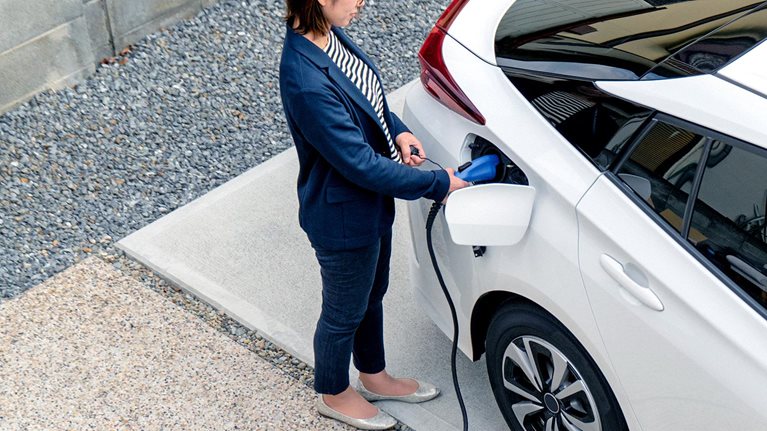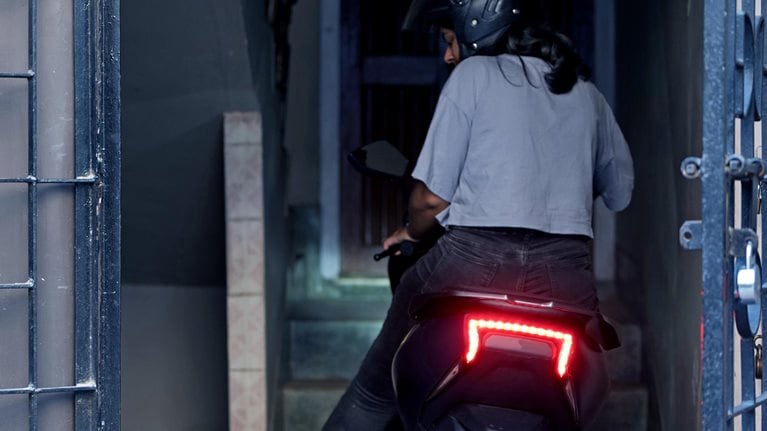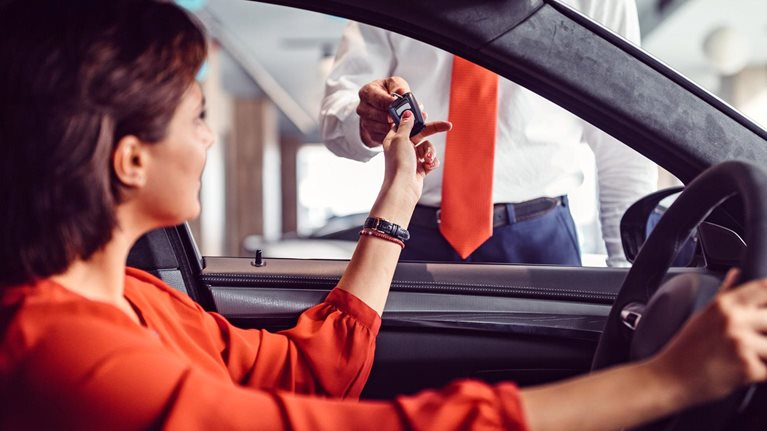If you feel as though you’re seeing more electric cars on the road, it’s because you are. Electric-vehicle (EV) registrations in the United States have increased 45 percent annually since 2017, with US coastal states leading in consumer demand.1 This growth can be partially attributed to improving charging infrastructure, more and better models from which to choose, and EV cost improvements over time. For instance, research from McKinsey Battery Insights shows that battery cell costs today are just one-third of what they were a decade ago. Regulatory changes aimed at helping the country achieve its emission-reduction targets, such as the California Air Resources Board’s air pollution programs and the federal Inflation Reduction Act, have also likely played a role.
Yet consumers are facing mounting fiscal pressure that could affect their purchase decisions. Interest rates are up from 0.05 percent in early 2022 to 5.33 percent today.2 And the average annual cost of owning a car for the first five years has surpassed $12,000, up from about $10,700 in 2022; that is 16 percent of the median household income before taxes.3
To better understand the impact on car buyers, we surveyed more than 1,000 consumers, representing average US car buyers (see sidebar, “About the survey”). The survey revealed that while the current economic environment may have people rethinking EV and other car purchases in the short term, EV interest continues to grow. The future is still electric—it may just take longer to get there.
People expect to delay new purchases for both EVs and other cars because of reduced purchasing power
The current high-interest-rate environment has likely reduced purchasing power for a large share of US consumers. Seventy-seven percent of respondents noted that reduced purchasing power is causing them to either postpone large expenses or be more conscious about spending. Car purchases are likely to be affected: nearly 40 percent of respondents who had intended to buy a vehicle are postponing that purchase, while a quarter plan instead to purchase a more affordable car type (Exhibit 1). Notably, buyers considering an EV said they were less inclined to delay their purchase or choose a more affordable option, instead showing more interest in extended financing options. Few respondents are planning to entirely abandon existing plans to purchase a car, but those who are cite high car prices, lack of affordability, and high interest rates for financing as reasons for their decision.

Current economic factors increase interest in financing
When buying a new vehicle in 2023, about 80 percent of buyers in the United States chose to finance, while about 20 percent chose to purchase outright.4 Compared with December 2022, fewer people today expect to purchase future cars outright (43 percent versus 53 percent in 2022), and respondents expressed growing interest in credit financing and leasing—though financing becomes more expensive with higher interest rates (Exhibit 2). At the same time, the landscape of auto financing is becoming increasingly complex: consumers are worried about unstable residual value for EVs because of evolving battery technology, energy prices, and government subsidies.5 Together, these concerns could slow the shift to EVs for some consumers.

Consumer interest in financing could be viewed as a reflection of growing affordability concerns, especially for EVs, which have higher purchase prices. However, we also observed an unwillingness to sacrifice on certain features: 30 to 50 percent of respondents claimed they are very likely to prioritize vehicle size, premium brands, or higher trim when purchasing a new vehicle. It could be that the balance of consumers is willing to compromise given reduced purchasing power.
As for where they’re making purchases, dealerships continue to play a significant role in the US car-buying experience and in financing: about 70 percent of respondents purchased their last vehicle at a dealership, and 40 percent sought financing through a dealership or OEM.
Despite affordability concerns, US consumers express growing intent to purchase EVs
Despite many people putting the brakes on new-car purchases, EV purchase intent among US car buyers continues to grow: roughly one-third of US car owners said their next car purchase will be an electric or hybrid vehicle, up 10 percent from December 2022 (Exhibit 3). Fewer US car buyers are strictly opposed to switching to EVs, with just one-quarter expressing this resistance compared with 30 percent in December 2022. The survey also revealed an 8 percent decrease in people who intend to buy one or more new internal-combustion-engine (ICE) vehicles, suggesting that demand is shifting toward electrification among new-car purchases.

At the same time, the survey revealed a 40 percent increase in people who expect to purchase one more used ICE vehicle before switching to EVs. Rising interest rates and reduced purchasing power might therefore delay the speed of EV uptake—at least in the short term. Interestingly, despite having lower purchasing power, a greater proportion of younger consumers would consider an EV for their next car compared with older consumers (50 percent and 29 percent, respectively).
Discounts could spur car purchases in the United States
About half of US car buyers would consider purchasing an EV if the right subsidies were provided. Based on our survey results, the average pre-COVID-19 sales discount of 10 percent could potentially unlock 18 percentage points of additional car buyers, while a discount of more than 15 percent might increase demand by at least 25 percentage points (Exhibit 4). Given that discounts for EVs tend to be higher than ICE equivalents, some increased demand should be expected from rising EV incentives.

For context, current OEM incentives are about 4 percent for ICE vehicles and roughly 7 percent for EVs.6 Government subsidies—such as the clean vehicle credit,7 which can amount to up to $7,500 per vehicle—could potentially play a role in spurring demand.8 Some of these subsidies might also further influence consumers when they consider how to purchase their vehicles. In the case of the clean vehicle credit, qualifying for the full credit has fewer requirements when leasing a vehicle than when financing one.9
Consumers are facing reduced purchasing power, which may slow their shift to electrified mobility in the short term. However, our survey also revealed consumer resilience in auto demand and EVs. This, combined with the fact that the overall economics for EVs continue to improve, suggests the moment of pause could be fleeting.


